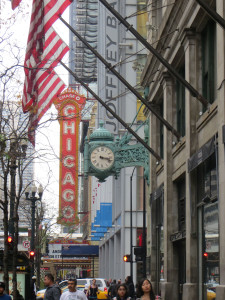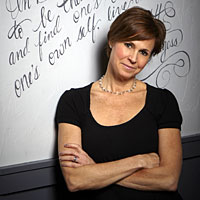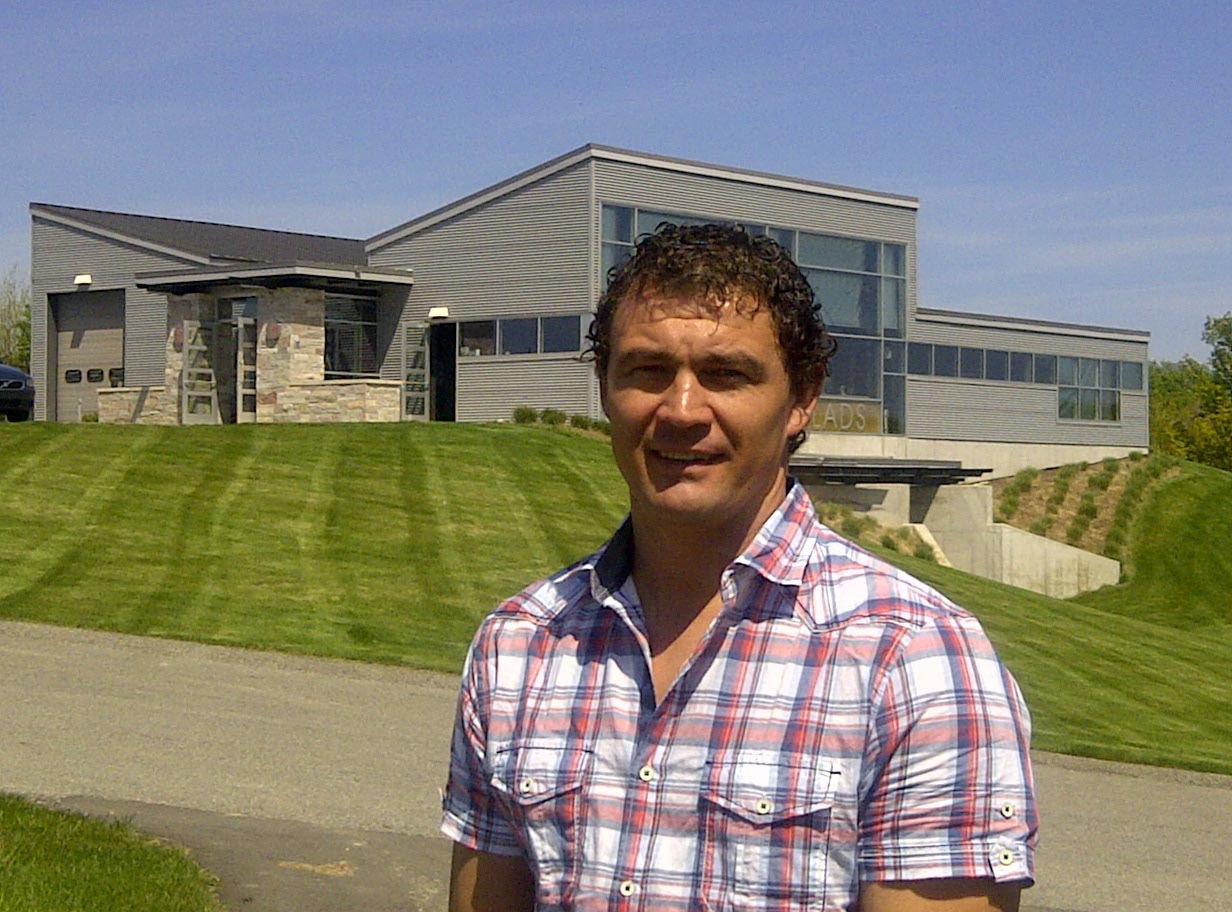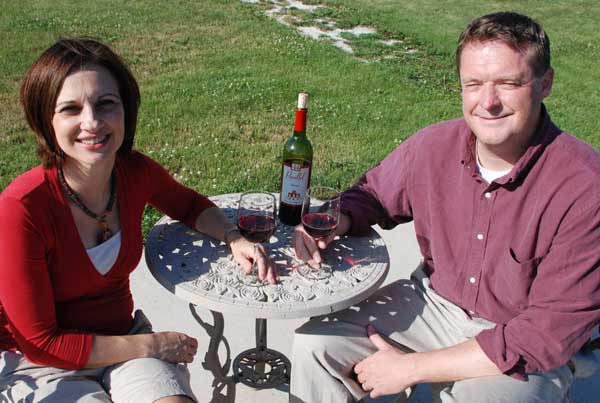Chicago and Wisconsin Restaurants Warming to Midwest Wine
Local wines on a Chicago or Milwaukee restaurant’s wine list used to get the cold shoulder. Despite affordable prices, diners didn’t bite, but some wine directors put Midwest wines on the list anyway, in hopes of turning a few more palates on to local wines.
These days, however, a flood of Michigan, Illinois and Wisconsin wines bump up against Bordeaux and Napa on seasoned restaurateurs’ wine lists. This includes Everest, the tony Lettuce Entertain You restaurant on the Chicago Stock Exchange’s 40th floor.
Sommelier Jennifer Schmitt folds three Michigan selections into the 1,600-bottle-strong wine list: Hickory Creek Winery Zero Oak Chardonnay (Buchanan, Mich.), Wyncroft Winery Chardonnay (Buchanan, Mich.) and Wyncroft Winery Pinot Noir.
‘They’re very beautiful. I do enjoy these wines quite a bit,” she says about the Wyncroft wines. Hickory Creek’s Chardonnay ‘is a clean, very fruit-driven and elegant-style Chardonnay.”
Everest also features an Illinois wine on the reserve list (1997 Lynfred Winery Cabernet Sauvignon, Roselle, Ill.) ‘It’s a little bit softer but it’s fun to be able to see how New World wines can age well,” says Schmitt.
Everest isn’t the Windy City’s only fine-dining establishment to turn to wines expressing Midwestern terroir. In Chicago’s Loop, Walnut Room White and Walnut Room Red — two proprietary wines from Lynfred Winery — sit comfortably on the Walnut Room’s menu at Macy’s flagship State Street store.
‘The Walnut Room is a truly iconic Chicago restaurant so it is of great importance to choose another Chicagoland icon, like Lynfred Winery, to bottle our house selections,” says Brad Saylor, Macy’s regional chef. ‘Our customers enjoy the wines and the way they pair not only with our traditional menu items but our new and seasonal selections as well.”
Lynfred also produces a proprietary wine (Quick Fire Blend: 70 percent Cabernet Sauvignon, 20 percent Shiraz and 10 percent Merlot) — for Quick Fire Cafe, a 6,000-square-foot fast-casual concept which opened this month in Bloomingdale, Illinois.
Chef-owner Nunzio Laudando believes the wine will pair deliciously with pastas cooked in a wood-burning oven. Other Lynfred wines are on the list, including Vin de City Red. ‘We’re trying to get wine kegs as well,” says Laudando.
Amy Morton, owner of Found in Evanston, agrees that if regional wineries followed in the footsteps of West Coast wineries by offering kegs to Chicago-area restaurants, it would be a huge success.
Of 44 wines by the bottle at Found, three are from Michigan: Chateau Grand Traverse’s Gamay Noir, Left Foot Charley (Traverse City, Mich.) and L. Mawby Vineyards Blanc de Blancs (Suttons Bay, Mich.)
‘We really try to switch these wines out so we always have something of theirs on the list,” she says about Chateau Grand Traverse.
In Chicago’s Fulton Market neighborhood, Publican Quality Meats is also into local wines, pouring Chateau Grand Traverse’s (Traverse City, Mich.) Ship of Fools and Whole Cluster Riesling. At The Publican restaurant next door, Good Harbor Vineyards‘ (Lake Leelanau, Mich.) Gewurztraminer is poured.
‘At first, guests tend to be reluctant to try local wines, but when they do they love it,” says partner and wine buyer Eduard Seitan, who recently judged 1,600 wines at the Pacific Rim Wine Competition in California, where Michigan ‘was a strong competitor.”
As a regular judge at the Michigan Wine Competition he’s noticed steady improvement in Michigan wines each year.
In Wisconsin, more and more restaurants are carrying Badger State wines, pairing them with everything from Mader’s Restaurant’s German cuisine (Staller Estate Winery, Delavan, Wis.) in Milwaukee to a 24-ounce Porterhouse steak at George’s Steak House in Appleton.
Being near a winery helps restaurants promote Wisconsin wine. J’s Pub & Grill — open since the spring of 2013 —in Reedsburg, Wis. is a 25-minute drive from Wollersheim Winery in Sauk City, Wis.
‘From the time we opened, I put as much thought into the beverage program as I did the food,” says chef-owner Jayson Pettit. ‘Wisconsin has some phenomenal wines.”
This spring he added six more Wisconsin wines, including Botham Vineyards Big Stuff Red (Barneveld, Wis.), pairing well with meats and spicy foods. A winemaker dinner with Wollersheim Winery in April put regional wines on locals’ radars.
Sixty people, with scorecards in hand, attended J’s Pub & Grill’s walk-around wine tasting last winter. California wines were poured alongside their Wisconsin counterparts.
‘We used that (feedback) to build our new wine list,” says Pettit.
Rebranding his wines — mostly made from fruits other than grapes, or a blend of grapes and fruit — as dessert wines helped Rob Pollman, Door Peninsula Winery (Sturgeon Bay, Wis.) winemaker get into the door at restaurants.
‘When they know of us, they think of cherry or blackberry. That’s been a hurdle. For us to compete with Napa Valley, that’s not going to happen,” says Pollman, whose wines are on the lists at Saz’s in Milwaukee, Shipwrecked in Door County and George’s Steak House in Appleton.
‘You go into a chophouse or a fine-dining restaurant and that’s a tougher sell but we’re gradually creeping into those. Our branding has been Door County from day one,” he says.
‘People want to buy things locally made and produced.” Locavore love is steering many towards Midwestern wines, an area of the wine list once outside of their comfort zones. Carrying edibles and drinks sourced locally is a mantra at Found in Evanston, so local wines fit right in.
Just before opening Found during November of 2012, Amy Morton and her husband tasted wines in Traverse City, Mich., only to find many are not distributed in Illinois.
‘The really good ones sell out even before they leave the tasting room,” she says, ‘and the majority of out-of-state wines aren’t the caliber of what we’re looking for and are super fruit-forward.” Developing relationships with distributors has helped.
‘All of our reps know that this (regional wine) is a huge focus of ours,” says Morton. ‘Any time something becomes available in Illinois for the first time they rush to us.”
Still, her goal is to introduce diners to Michigan wines, including the wineries’ stories. This fall, Found will host a wine dinner devoted to Michigan wines as part of its Moveable Feast pop-up dinner series.
‘We were blown away. We felt like we were in France,” she recalls about that fateful road trip to Traverse City in 2012, which included L. Mawby Vineyards. ‘We’ve had their Blanc de Blancs on our (wine) list since we opened,” says Morton. ‘We adore it.”
Next, Morton hopes to expand her focus downstate. ‘There are some wines from Southern Illinois that are really fun and exciting. I need to road-trip it down there.”
It’s impossible to say how many regional restaurants are considering adding Midwest wines, but it’s clear more eateries are giving regional wine a second look.
Two weeks into his job as wine and beverage manager at Lockwood — the fine-dining eatery inside Palmer House Hilton just off Chicago’s Michigan Avenue — Potito Conza, who joined the restaurant in October, was tasked with rewriting the 2,400-bottle-strong list. By late April he’d honed in on a theme: boutique small-production wineries. He’s got an eye on California, Europe and — this is the surprise — Michigan.
Kristine Hansen is a Milwaukee based wine, food and travel writer.







Great article. Wish Amy would take the time to try our FORTY WINKS brand made in MI. We’re in her back yard after all.